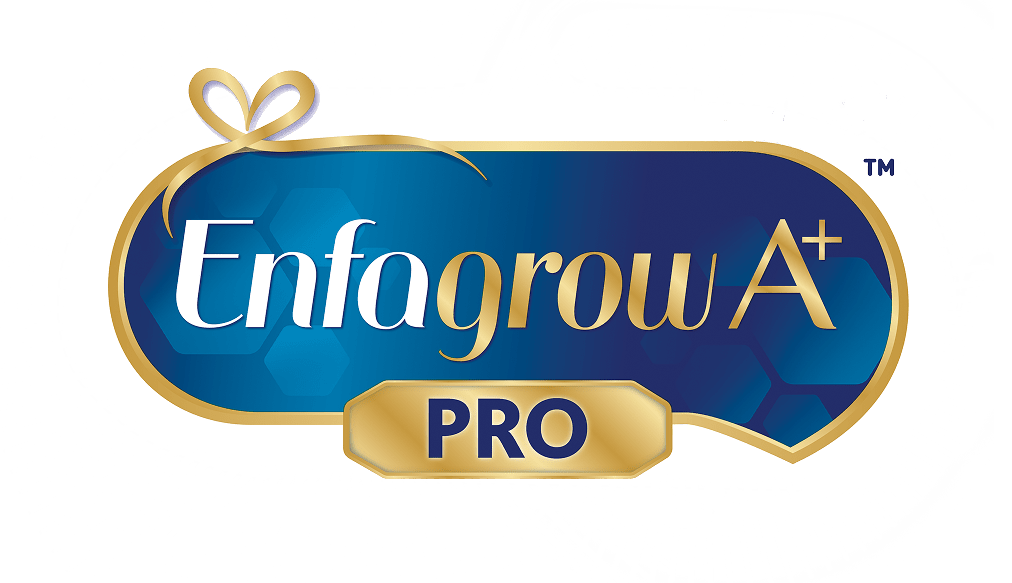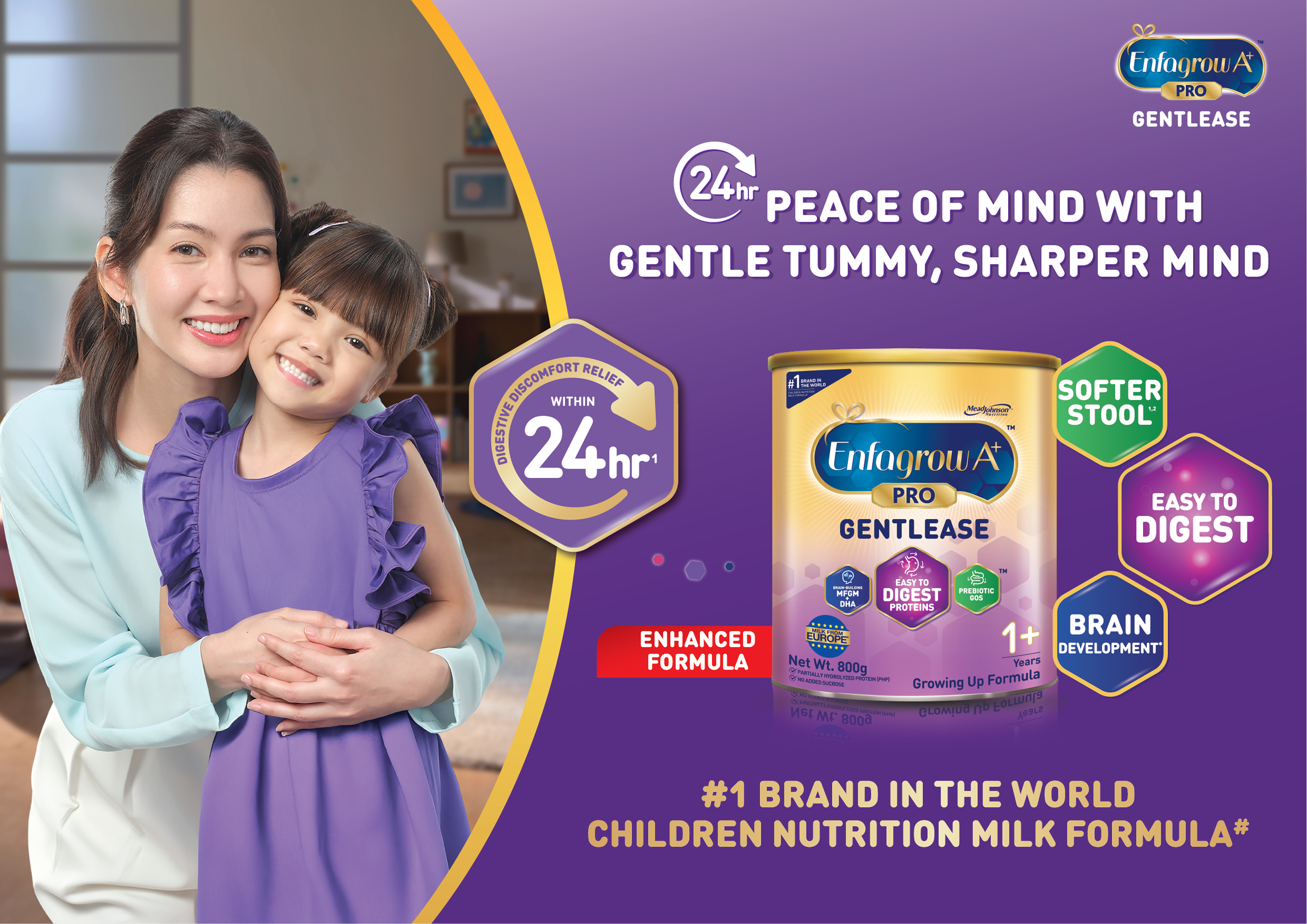


More and more Singapore mums are choosing — or needing — a C-section. Previously seen only as an emergency procedure, a C-section has now become a standard method to bring a child into the world. For many mothers in Singapore and worldwide, the decision is largely influenced by medical advice, personal preferences, and changing views of risk and safety. Whether planned or unplanned, the growing number of C-sections has sparked meaningful conversations about what it means for both mother and child.
The statistics speak for themselves. In Singapore, C-section rates rose from 32.2% in 2005 to 37.4% in 2014.1 Globally, the increase is just as significant — from 16 million C-sections in 2000 to nearly 30 million by 2015.2
With estimates suggesting that the rate could reach 28.5% by 2030 4 , it raises important questions: What’s driving the shift? - And what does it mean for your child’s long-term health?
Factors Behind Rising Number of C-Section cases in Singapore
The reasons vary from country to country. According to the WHO, it boils down to healthcare policies, hospital funding, cultural beliefs, patient and physician preferences, how people perceive medical risks, increasing preterm births, and the quality of care available. 5
Here in Singapore, some women choose C-sections to avoid labour pain, while others do it to reduce the risk of complications like foetal distress.6 Other drivers include advanced maternal age, multiple pregnancies from assisted reproductive technology, and prior C-section history, which can increase the likelihood of a repeat procedure.7
Understanding the Shift in Labour Preferences
Doctors are well aware of the many factors behind C-sections.
In recent years, they have also observed a shift in how women approach motherhood. Many of them now walk into consultations well-informed and confident in their choices. And after exploring their options, some still choose to proceed with an elective C-section after carefully weighing the pros and cons.9
However, health experts note that it’s helpful for mums to be aware of how C-sections and vaginal births may differ in terms of maternal recovery and early microbiome development of the child — so they can make the choice that feels right for them.10 Here are the potential effects on maternal recovery after a C-section compared to a vaginal delivery, based on current evidence10:
Maternal Recovery – C-section vs. Vaginal Delivery
-
Recovery period – C-sections are major abdominal surgeries, often requiring 4–6 weeks for full recovery, compared to about 1–2 weeks for uncomplicated vaginal births.21
-
Postoperative pain – C-section mums may experience more pain and discomfort at the incision site, affecting mobility and daily activities.22 In contrast, mothers who have a normal delivery typically do not experience this type of incision pain.
-
Risk of surgical complications – This includes infection, excessive bleeding, blood clots, or injury to surrounding organs.22 Such risks are generally absent in mothers who have normal delivery.
-
Hospital stay – C-section mothers typically remain hospitalised for 3–4 days versus 1–2 days for vaginal births.21
-
Delayed skin-to-skin - Surgical recovery may delay immediate bonding, though hospital protocols increasingly support early contact.24While for normal delivery mums, they are able to initiate skin-to-skin contact sooner.
Mums should also consider how the child’s arrival method can impact their health & development.
Preparing Ahead for C-Section Recovery in Singapore: Caring for Your Body, Mind, and Relationships
If you’re considering a C-section, it’s important to understand not just the physical recovery but also the emotional and relational journey that often accompanies it. Most mums typically need four to six weeks to heal, with the first two weeks marked by limited movement and recovery from surgery. This period is often referred to as the subacute postpartum phase, during which 87–94% of women report at least one health concern, ranging from lingering pain to emotional strain.25
Physical Healing & Self-Care
Recovery from abdominal surgery involves pain management, incision care, and a gradual return to activity. You'll need to avoid heavy lifting (including your child) for several weeks and focus on gentle healing—light walking, pelvic floor exercises, and nutritious meals can support recovery and gut function.26
Signs such as fever, excessive bleeding, severe pain, or emotional distress—like overwhelming sadness—should prompt a prompt check-in with your healthcare provider.27
Mental Recovery & Emotional Well-being
Delivering via C-section can trigger a wave of emotions—from relief to grief or guilt—especially if the experience diverged from expectations. Approximately one-third of women report emotional or physical health concerns that persist beyond the initial recovery phase.28
It’s natural to feel overwhelmed or disconnected. Studies show that support from your partner, family, or fellow mums significantly lowers the risk of postpartum depression and supports emotional healing.29
Reconnecting Relationships & Bonding
Physical limitations and emotional fatigue may strain your connection with loved ones. That’s normal—but intentional small gestures can help. Simple acts like consistent skin-to-skin contact, partners pitching in with household tasks or errands, and open communication about needs can rebuild intimacy and support your emotional recovery.30
How an Elective C-Section Poses Risks to a Child’s Gut Bacteria Development
Studies show that children born via C-section typically have lower levels of beneficial gut bacteria — such as Actinobacteria, Escherichia, Bifidobacterium, and Bacteroides — than those who arrived via natural delivery.
Children delivered via C-section miss exposure to the mother’s vaginal and gut microbiota, which normally occurs during passage through the birth canal. Instead, their first bacterial contact often comes from the skin and hospital environment. This reduces the likelihood of beneficial microbes colonising their bodies.
These bacteria are key to growth, early digestion and immune function—without them, children may face more immunity-related issues, tummy upsets, or common infections. These bacteria are believed to be crucial for growth and may help protect against conditions like asthma, and gastroenteritis. 11
At the same time, C-section children often show higher levels of pathogens like Pseudomonas and Acinetobacter, which are commonly found in hospital environments. 11 This exposure could increase their risk of early-life infections. Studies also suggest that gut microbiome differences can persist for months — and in some cases, years — which may influence long-term metabolic and immune health. 12

Building a Strong Foundation for Your C-Section Child’s Health
In addition to preparing for post C-section recovery, it’s worth thinking about how to support your C-section child’s health.
C-section children may miss out on critical exposure to their mother’s beneficial bacteria at birth, leading to a less diverse gut microbiome. You can help your child by giving them the right nutrition and getting them outdoors for fresh air and sunlight. Keeping hygiene sensible (not over-sterilised) and scheduling regular check-ups to track their growth and health are ways to help them along.
Nutrition plays a key role in building a child's immunity - hence it is important that mums know what ingredients to look out for when choosing a milk formula for their children, especially C-section children. A key ingredient to look out for is 2'-FL. 2’-FL (2’-Fucosyllactose) is a prebiotic that supports the immune system and the balance of microflora. Enfagrow A+ Pro C-Biome, with 2x higher 2’-FL supports stronger immunity in children by supporting immune resilience and a healthy gut from the start. This is particularly important for C-section children, who may experience delayed microbiome development.
It also includes Prebiotic inulin that strengthens the gut by producing healthy fats, improving iron absorption, and fighting harmful pathogens. 18 Prebiotics are special types of fibre that serve as food for the good bacteria in the gut. They help these beneficial microbes grow and thrive, supporting better digestion and immunity. By boosting gut health and defending against harmful microbes—laying the foundation for a stronger, more resilient immune system.
Including these nutrients early can help bridge the gut microbiome gap seen in C-section children, supporting digestion, immunity, and developmental milestones. 20
Enfagrow A+ Pro C-Biome also has MFGM and expert recommended DHA, which are good for brain development. MFGM, milk fat globule membrane, is a natural coating around fat droplets in milk that’s rich in nutrients, which boosts cognitive function and emotional regulation, as well as expert-recommended levels of docosahexaenoic acid (DHA), which aids brain development. Together, these nutrients can support long-term higher IQ and EQ holistic brain development beyond 5 years, which is suitable for C-section children. 15 16 17
In conclusion
Whether planned or medically necessary, a C-section is ultimately a mother’s decision. In Singapore, the right resources and expertise are in place to ensure a healthy journey and strong start for both mum and baby.
What matters most is staying informed, planning, and using an evidence-based approach when making choices before a C-section. This is the best option for both your well-being and your child’s future.
Discover how Enfagrow A+ Pro C-Biome supports stronger immunity and gut health in C-section children. Sign up for FREE expert tips on nurturing gut health and early development.
Recommended articles
- Different Types of Birth
- The Pros and Cons of C-Section for Your Second Baby
- Preparing for Childbirth - Things no one tells you
References :
-
Wiley Online Library. 2018. Trends and predictors of cesarean birth in Singapore, 2005-2014: A population-based cohort study https://onlinelibrary.wiley.com/doi/abs/10.1111/birt.12341 Accessed August 2025
-
The Straits Times. Doctors warn of global C-section 'epidemic'. NHS. Constipation in children. https://www.straitstimes.com/world/doctors-warn-of-global-c-section-epidemic Accessed August 2025
-
Springer Nature Link. 2022. C-sections and hospital characteristics: a long term analysis on low-risk deliveries https://link.springer.com/article/10.1007/s43999-022-00014-2 Accessed August 2025
-
ScienceDirect. 2024. Prevalence and associated factors of caesarean section among mothers who gave birth across Eastern Africa countries: Systematic review and meta-analysis study. https://www.sciencedirect.com/science/article/pii/S2405844024085426 Accessed August 2025
-
World Health Organization. 2021. Caesarean section rates continue to rise, amid growing inequalities in access. https://www.who.int/news/item/16-06-2021-caesarean-section-rates-continue-to-rise-amid-growing-inequalities-in-access Accessed August 2025
-
National Library of Medicine. 2003. Attitudes of Singapore women toward cesarean and vaginal deliveries. https://pubmed.ncbi.nlm.nih.gov/12566197/ Accessed August 2025
-
Psychology Today. 2021. The Case Against Cesareans on Demand. https://www.psychologytoday.com/sg/blog/explorations-of-the-mind/202112/the-case-against-cesareans-on-demand Accessed August 2025
-
National Library of Medicine. 2013. Women’s Preferences of Method of Delivery and Influencing Factors. https://pmc.ncbi.nlm.nih.gov/articles/PMC3918192/ Accessed August 2025
-
National Library of Medicine. 2010. Influences on decision making among primiparous women choosing elective caesarean section in the absence of medical indications: findings from a qualitative investigation. https://pubmed.ncbi.nlm.nih.gov/21176305/ Accessed August 2025
-
American Medical Association. What doctors wish patients knew about getting a cesarean section. https://www.ama-assn.org/delivering-care/population-health/what-doctors-wish-patients-knew-about-getting-cesarean-section Accessed August 2025
-
National Library of Medicine. 2024. Effect of different delivery modes on intestinal microbiota and immune function of neonates. https://pmc.ncbi.nlm.nih.gov/articles/PMC11286838/ Accessed August 2025
-
Quadram Institute. 2021. Persistence pays off in the human gut microbiome. https://quadram.ac.uk/gut-microbiome-persistence/ Accessed August 2025
-
Cleveland Clinic. C-Section. https://my.clevelandclinic.org/health/treatments/7246-cesarean-birth-c-section Accessed August 2025
-
MyHealth.Alberta.ca. Caesarean Section: What to Expect at Home. https://myhealth.alberta.ca/Health/aftercareinformation/pages/conditions.aspx?hwid=ud1242 Accessed August 2025
-
Mead Johnson Nutrition. Enfagrow A+ MindPro C-Biome. https://shop.enfagrow.com.my/products/enfagrow-a-mindpro-c-biome?variant=41232313745488 Accessed August 2025
-
ScienceDirect. 2012. Milk fat globule membrane (INPULSE) enriched formula milk decreases febrile episodes and may improve behavioral regulation in young children. https://www.sciencedirect.com/science/article/abs/pii/S0899900711003741 Accessed August 2025
-
ScienceDirect. 2017. Docosahexaenoic acid (DHA), a fundamental fatty acid for the brain: New dietary sources. https://www.sciencedirect.com/science/article/abs/pii/S0952327817300285 Accessed August 2025
-
Oxford Academic. 2024. Comparative prebiotic potential of galacto- and fructo-oligosaccharides, native inulin, and acacia gum in Kenyan infant gut microbiota during iron supplementation [online] Available at https://academic.oup.com/ismecommun/article/4/1/ycae033/7625512 [Accessed August 2025]
-
ScienceDirect. 2023. Human milk oligosaccharides as prebiotics [online] Available at https://www.sciencedirect.com/science/article/pii/S187595722200273X#:~:text=8,1 [Accessed August 2025]
-
National Library of Medicine. 2021. From Short- to Long-Term Effects of C-Section Delivery on Microbiome Establishment and Host Health. https://pmc.ncbi.nlm.nih.gov/articles/PMC8537978/ Accessed August 2025
-
Mayo Clinic – C-section recovery overview. https://www.mayoclinic.org/healthy-lifestyle/labor-and-delivery/in-depth/c-section-recovery/art-20047310
-
World Health Organization – Caesarean section fact sheet. https://www.who.int/teams/sexual-and-reproductive-health-and-research-(srh)/areas-of-work/maternal-and-perinatal-health/caesarean-section
-
Mayo Clinic. Repeat C-sections. Is there a limit? https://www.mayoclinic.org/tests-procedures/c-section/expert-answers/c-sections/faq-20058380
-
UNICEF – Early skin-to-skin contact benefits. https://www.unicef.org.uk/babyfriendly/baby-friendly-resources/implementing-standards-resources/skin-to-skin-contact/
-
American College of Obstetricians and Gynecologists (ACOG). "Cesarean Birth." 2023. https://www.acog.org/clinical/clinical-guidance/committee-opinion/articles/2019/01/cesarean-delivery-on-maternal-request
-
World Health Organization. "Postnatal care for mothers and newborns." 2022. https://www.who.int/publications/i/item/9789240045989
-
Cleveland Clinic. C-section Recovery Timeline and Aftercare. https://health.clevelandclinic.org/c-section-recovery
-
NHS UK. Recovery - Caesarean section. https://www.nhs.uk/tests-and-treatments/caesarean-section/recovery/#:~:text=You'll%20usually%20be%20advised,aspirin)%20while%20you're%20breastfeeding
-
Health Affairs. Trends In Primary Cesarean Section Rates Among Women With And Without Perinatal Mood And Anxiety Disorders. https://www.healthaffairs.org/doi/full/10.1377/hlthaff.2021.00780
-
Frontiers. Immunomodulatory and Prebiotic Effects of 2′-Fucosyllactose in Suckling Rats. https://www.frontiersin.org/journals/immunology/articles/10.3389/fimmu.2019.01773/full?utm_



